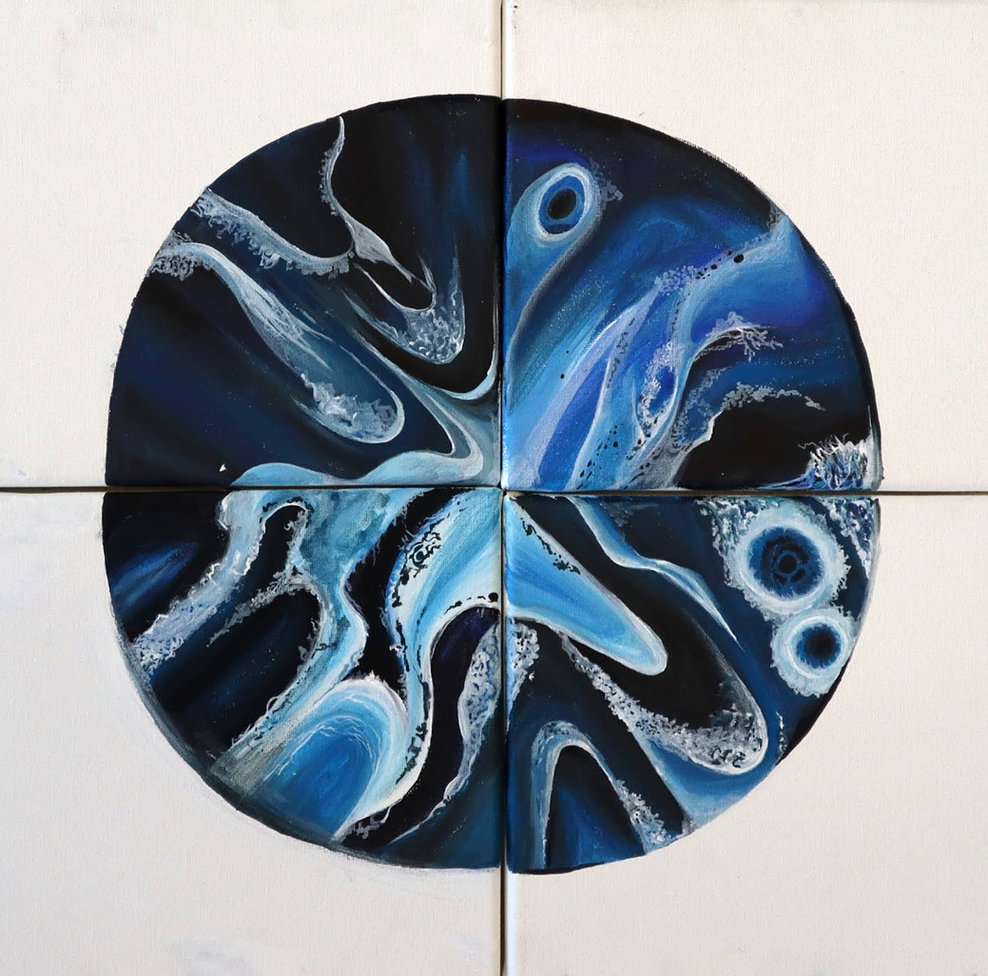OverwriteThis
overwriteThis
overwriteThis
Temperature (set as: T=10^x)
External field
Refresh period
spin color sliders
This page simulates a square-lattice Ising model with Metropolis-algorithm spin flips. It can also simulate a mystery spin model, which you can explore the properties of!
Sliders, text boxes, and drop-down menus can be used to control various parameters, such as the external field strength, the rate at which the system configuration will be visually updated (measured in units of MC sweeps, i.e., in units of N*N attempted spin flips), the size of the lattice, and (of course), the temperature.
Note that slider and text box are configured to control the field on a linear scale and the temperature on a log scale . It might be helpful to remember that the critical temperature in this parameterization of the Ising model is roughly Tc=2.26919, which corresponds to T=10^(.35587). This temperature is not particularly special with respect to the mystery spin model you can select.
Annoyingly, I have made an error in the display region of the simulator: it currently displays only one quarter of the total unit cell. This is enough to get a visual flavor of what is going on, and clicking on "Download snapshot" will download a png of the full configuration.
Buttons:
Press the "Start (or Pause) simulation" button to start or pause the simulation. The display will update with the current time and the current energy (or magnetization) per spin.
"Random initial conditions" will set the time to zero and uniformly pick spin up or down for each lattice site.
"Uniform initial conditions" will set the time to zero and make all spins "spin up."
A text file containing columns of time, the energy per spin, and the magnetization per spin (or the value of the order parameter, in the case of the mystery model) can be downloaded by clicking the "Download data" button.
If for some reason you only want to download data once the system has equilibrated, clicking "Reset data collection" will empty some internal arrays, and only data from simulation steps after that point will be recorded.
"Download snapshot" will, not surprisingly, download a png image of the current state of the system.
Inspiration for this simulator came from seeing (and using!) Matt Bierbaum's Ising model simulator page . I've written plenty of code to do Ising simulations, but this seemed like it would be a fun excuse to learn how to write some simple javascript and integrate interactive simulations into a website! Note that the site linked above is more sophisticated, and implements variations that I was not particularly interested in adding (for example: the ability to switch between Metropolis MC spin flips and the Wolff algorithm, or seeing a graph of energy vs time on the screen). On the other hand, this page has ridiculous color sliders for the spin configurations, and the option to explore a mystery other spin-lattice model! And yes, I did set the defaults based on colors in the Sussman Lab logo, but I bet you can do better -- send me your most artistic (or most garish) spin configurations!
Sliders, text boxes, and drop-down menus can be used to control various parameters, such as the external field strength, the rate at which the system configuration will be visually updated (measured in units of MC sweeps, i.e., in units of N*N attempted spin flips), the size of the lattice, and (of course), the temperature.
Note that slider and text box are configured to control the field on a linear scale and the temperature on a log scale . It might be helpful to remember that the critical temperature in this parameterization of the Ising model is roughly Tc=2.26919, which corresponds to T=10^(.35587). This temperature is not particularly special with respect to the mystery spin model you can select.
Annoyingly, I have made an error in the display region of the simulator: it currently displays only one quarter of the total unit cell. This is enough to get a visual flavor of what is going on, and clicking on "Download snapshot" will download a png of the full configuration.
Buttons:
Press the "Start (or Pause) simulation" button to start or pause the simulation. The display will update with the current time and the current energy (or magnetization) per spin.
"Random initial conditions" will set the time to zero and uniformly pick spin up or down for each lattice site.
"Uniform initial conditions" will set the time to zero and make all spins "spin up."
A text file containing columns of time, the energy per spin, and the magnetization per spin (or the value of the order parameter, in the case of the mystery model) can be downloaded by clicking the "Download data" button.
If for some reason you only want to download data once the system has equilibrated, clicking "Reset data collection" will empty some internal arrays, and only data from simulation steps after that point will be recorded.
"Download snapshot" will, not surprisingly, download a png image of the current state of the system.
Inspiration for this simulator came from seeing (and using!) Matt Bierbaum's Ising model simulator page . I've written plenty of code to do Ising simulations, but this seemed like it would be a fun excuse to learn how to write some simple javascript and integrate interactive simulations into a website! Note that the site linked above is more sophisticated, and implements variations that I was not particularly interested in adding (for example: the ability to switch between Metropolis MC spin flips and the Wolff algorithm, or seeing a graph of energy vs time on the screen). On the other hand, this page has ridiculous color sliders for the spin configurations, and the option to explore a mystery other spin-lattice model! And yes, I did set the defaults based on colors in the Sussman Lab logo, but I bet you can do better -- send me your most artistic (or most garish) spin configurations!
